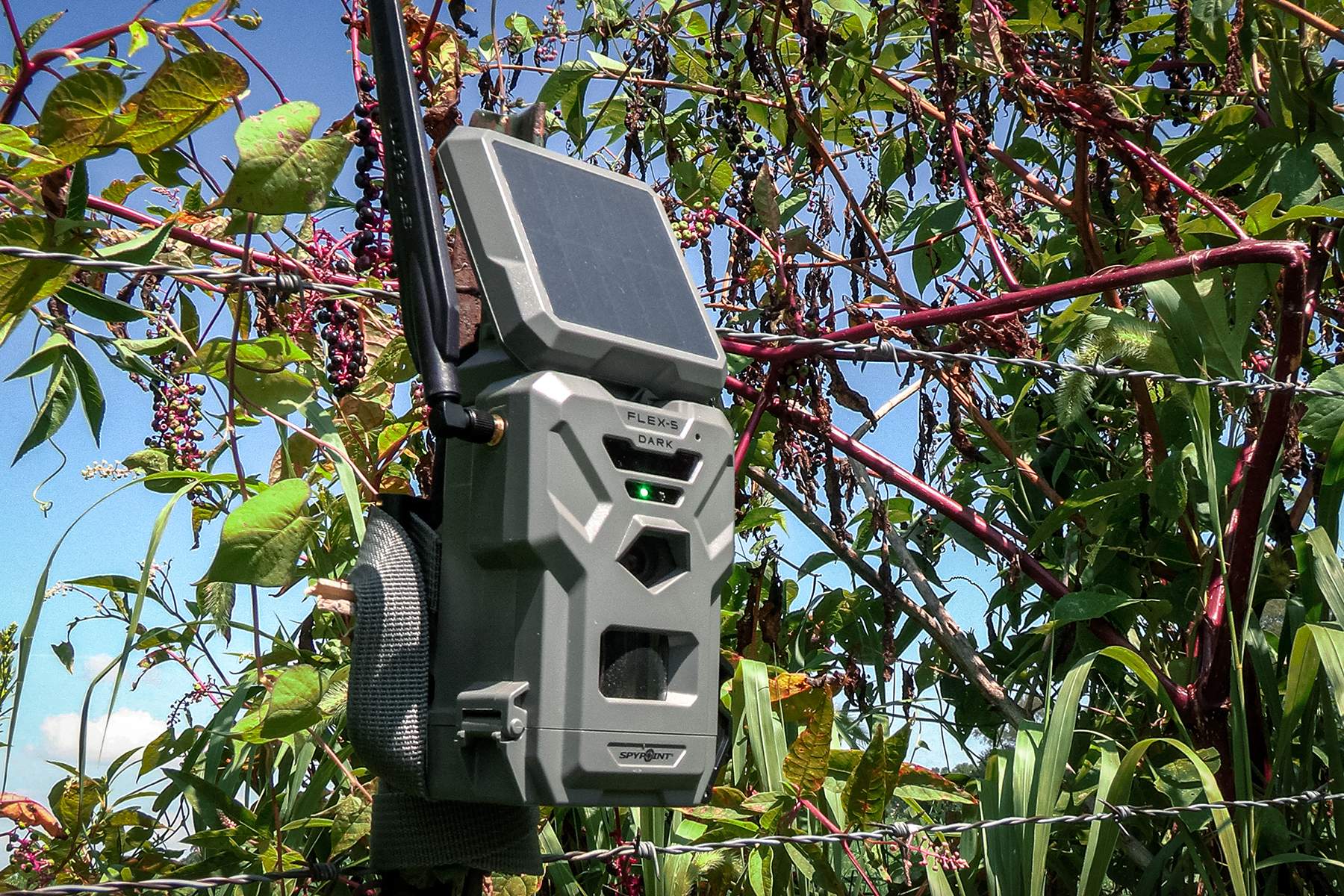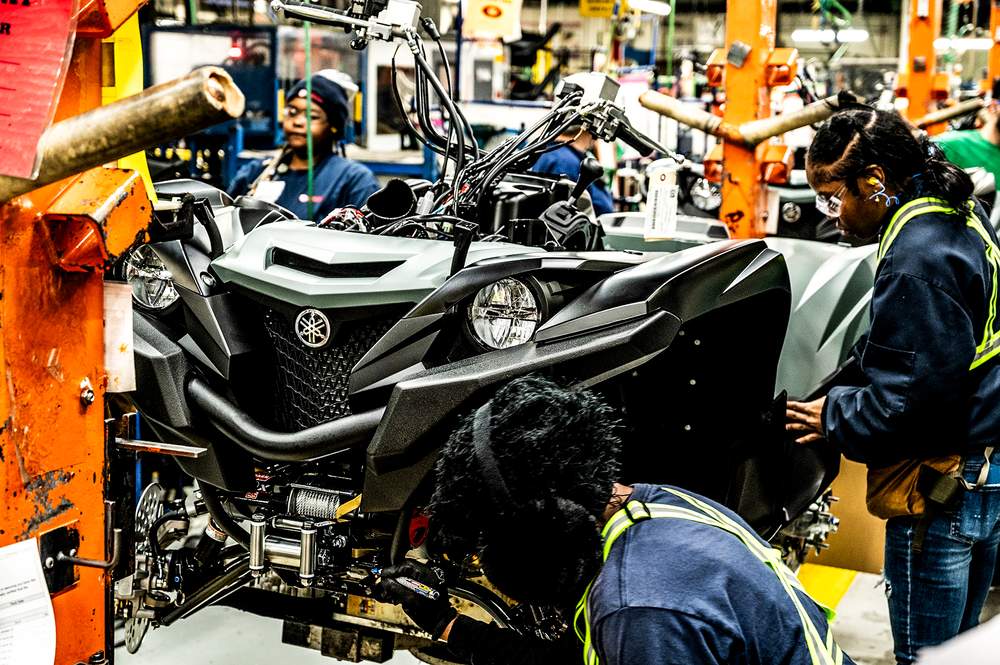Trail cameras are among the most revolutionary tools available to modern deer hunters. This scouting sidekick can do things no hunter could ever do on their own or in person, because as much as we want to, nobody can be in the field, ever vigilant, 24 hours a day, while never giving themselves away. Where permitted, trail cameras — specifically cellular models — are invaluable to today’s hunter.
But trail cameras aren’t perfect. Since their introduction, manufacturers have worked to increase image resolution, night vision capability, and battery life, especially for cellular cameras, which don’t last as long as SD-card-only models.
While many hunters still struggle with battery-life limitations, there are supplemental power source options available today from trail cam manufacturers like Spypoint that can help you save time and money throughout the pre-season and the hunting season itself.
Battery Power: The Way It Was and the Way It Is
In the past, many cellular trail camera models didn’t perform well in the battery-life department. In fact, most didn’t make it more than a few weeks, if that. When you would hang cameras over high-traffic areas, such as bait stations or watering holes, the batteries drained even faster. You needed an external power source to make these last any decent amount of time.
Up until a few years ago battery life still wasn’t that great, and some cellular trail cams still have this problem today. Even though most new models have longer staying power, trail cam users should still think about ways to get the most from their trail cams, including solar power. Some cams, like the Spypoint FLEX-S Dark trail cam, have a solar panel integrated right into the unit. But there are also independent solar panels you can use as external power sources for trail cams.

Adding a solar panel paired with a rechargeable lithium battery pack can keep a trail cam running, without direct sunlight, for up to six months, and you don’t have to do a thing to it.
Modern Trail Cam Power Solutions
Batteries are, indeed, expensive and the less you have to change them out, the better, but having trail cams that can stay in the field longer without maintenance also has other benefits for hunters.
A longer lasting power sources means fewer trips afield to replace batteries. This saves time, energy, money spent on replacement batteries, and gas money. That’s more cash in your pocket and more time to do other more enjoyable things. Even after spending money on solar power in the short-term, you save a lot of money in the long run.

Also, fewer trips to the hunting grounds and to the cameras themselves means you’re less likely to bump into deer and less pressure is applied to the deer herd overall. That leads to calmer deer to hunt.
A solar power source also produces more reliable intel. After all, dead batteries mean increased camera downtime. That’s lost scouting ability and information you can’t get back.
All things considered, it’s important to keep your cameras running. Using advanced trail cam power sources, such as solar, helps achieve that.
Ways to Maximize Cellular Trail Cam Battery Life

Maximizing battery life of cellular cameras used to be a great challenge. Today, it’s much easier to accomplish. There are numerous ways to maximize cell cam battery life. Use these methods to experience better battery life in the field.
Use Higher Quality Batteries
Most cameras still need batteries, even if external batteries are used. That said, you’ll need only one set of AAs that’d otherwise need to be changed repeatedly. Consider using a reputable brand, as some (not all) of the off-brand batteries are more apt to corrode, malfunction, and die quicker.
Install Rechargeable Lithium Batteries
Rechargeable lithium batteries tend to have longer battery life than alkaline AAs. Plus, these are rechargeable, so you save money again. Once depleted, simply recharge and re-use these.
Solar-Powered Trail Cameras
Trail cameras with integrated solar panels offer excellent battery life. Plus, run a rechargeable lithium battery pack, and you’re as optimized as possible. It’s a great one-two punch for extending battery life much longer than running alkaline AAs alone.
External Battery Boxes
Connect an external battery box to your cameras. Those that don’t already have an integrated solar panel stand to benefit from these added units.
External Solar Panels
Cameras without an integrated solar panel should be paired with an external solar option. This increases the power supply and greatly boosts the capacity. That’s an important step in elevating lifespan.
Orient Solar Panels Properly
Be sure to turn solar panels in the direction they’ll receive the most sunlight. This ensures a faster and more complete charge each day.
Use Battery-Friendly Camera Modes
Use the camera modes needed to accomplish goals. That said, if battery life is a top priority, consider using battery-friendly camera modes. That will lengthen batter life.
Cellular Trail Cam Power Solutions
Fortunately for hunters, there are several great cellular trail cam power solutions. Spypoint offers trail cams with integrated solar panels, traditional cameras with integrated solar panels, and external solar panels to pair with cell cams. The following products will all stretch the battery life for all your trail cam setups:
Spypoint FLEX-S Dark Cellular Trail Camera

The FLEX-S-DARK cellular trail camera offers built-in battery that replaces up to 1,000 AA batteries. The solar panel can provide power for up to 11 months at a time, even when the panel is not exposed to direct sunlight. It takes 40-megapixel photos and 1080P video (with sound).
The unit has a 100-foot flash and detection range. A 0.3-second trigger speed captures the action. It also comes with on-demand photos and Instant Mode. Dual-SIM technology ensures the best coverage. Setup is easy and you can manage cams remotely from afar.
Spypoint FORCE Pro S 2.0 Non-Cellular Trail Camera
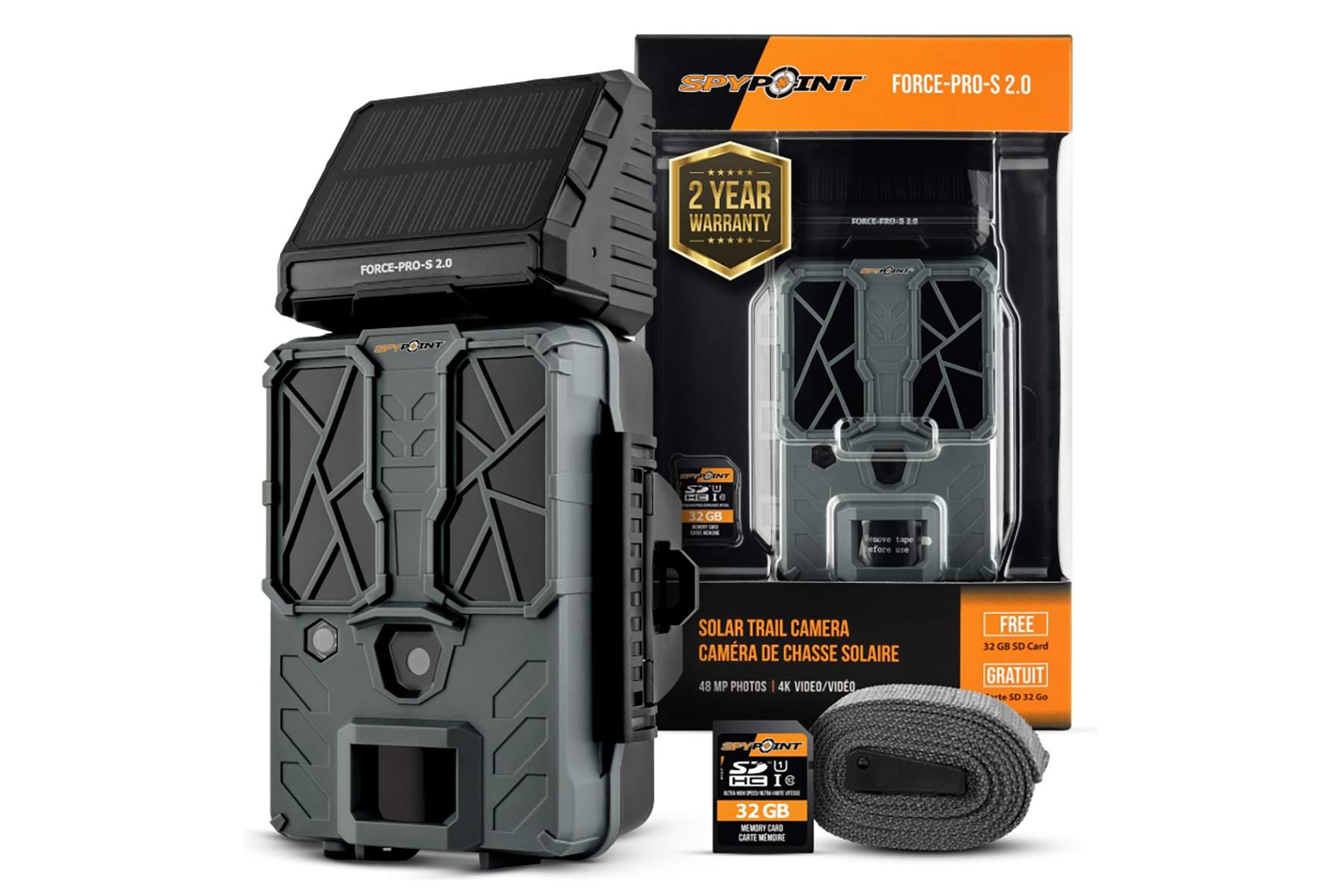
The FORCE-PRO-S 2.0 non-cellular trail camera comes with built-in battery that can run indefinitely. It shoots 4K video, takes 48-megapixel photos, has a 110-ft detection and flash range, and boasts a 0.2-second trigger speed.
SPYPOINT LIT-22 Rechargeable Lithium Battery Pack
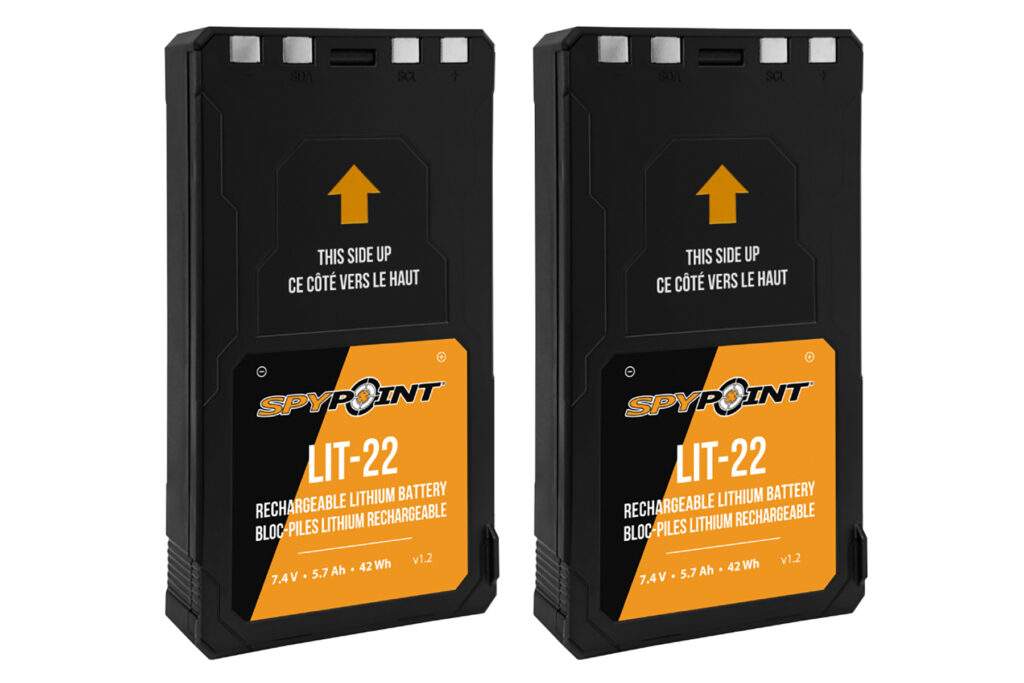
This battery pack replaces up to 1,000 AA batteries. This 7.4-volt, 5.4 Ah battery fits the standard battery tray. An AC charging cable is included. It’s compatible with the FLEX series (FLEX, FLEX G-36, FLEX E-36, FLEX-M, FLEX-S, and FLEX-PLUS).
The Spypoint SPLB-10 5W Solar Panel with integrated lithium battery
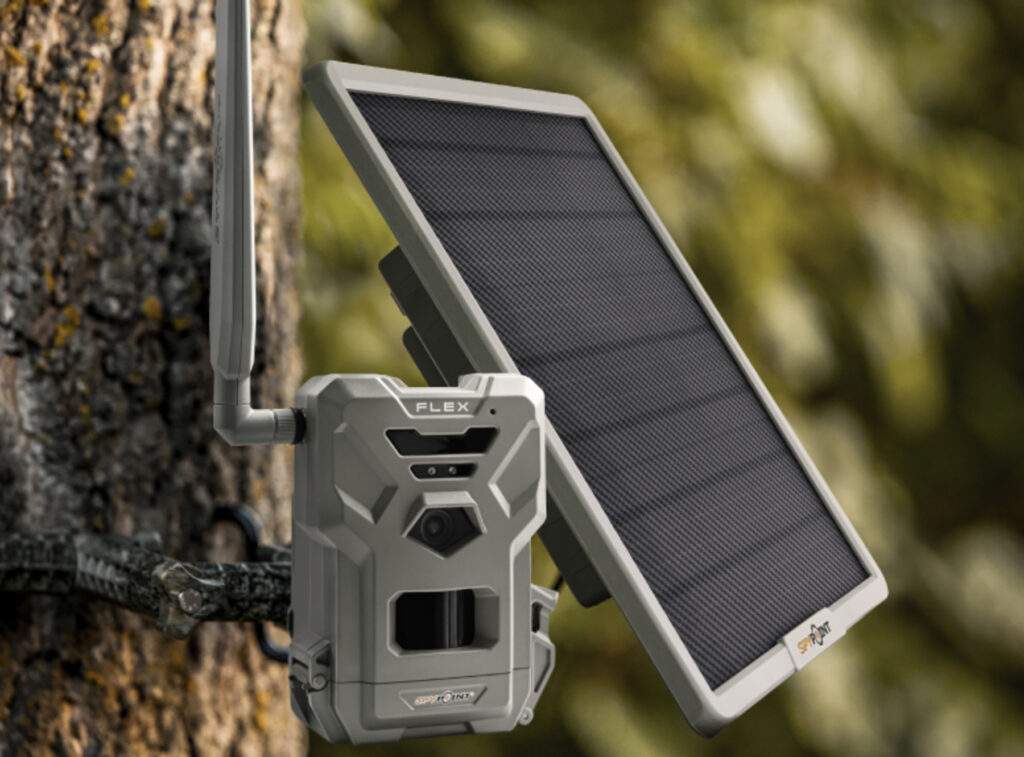
This setup replaces up to 1,000 AA batteries. It can provide power for up to 6 months without direct sunlight. This 12-volt, 1.5-A unit has a 7,500 mAh capacity. It comes with a 1.5 mm output cable (USB-C to USB-C and USB-A to USB-C).
Spypoint SPLB-22 10W Solar Panel
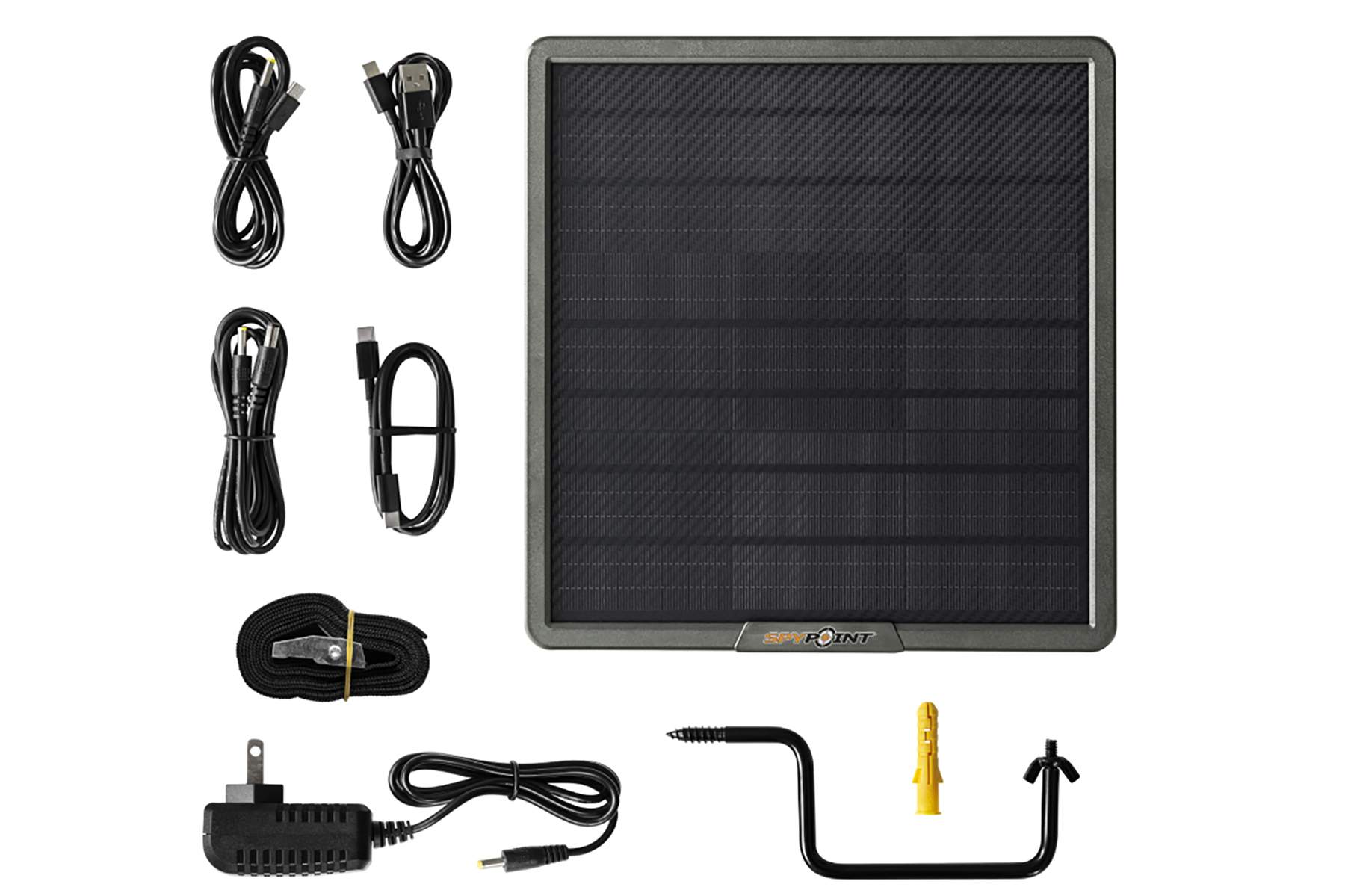
This solar panel comes with an integrated lithium battery. It replaces up to 2,000 AA batteries. Furthermore, it can provide power for up to 12 months at a time even when the panel is not exposed to direct sunlight. It offers 15,000 mAh, four LED indicator lights, and is 10.7 by 10.2 by 2 inches. It fully charges by the sun in about 24 hours, or in five hours by DC power.
Each of the above products are tested and proven. Consider these for taking Spypoint battery life to the next level. Increase battery life, spend less time changing batteries, spend fewer dollars on gas and batteries, pressure fewer deer, and receive more trail camera photos and data points this season.
--
Solar-powered trail cameras are excellent tools for increasing trail camera battery life. Using the solar-powered trail cameras with integrated panels, and pairing those without to external solar power sources, are great ways to have a better trail camera experience this season.
Check out H&B's unboxing of Spypoint's New-for-2025 Flex Dark and Flex-S Dark trail cameras.
This content is brought to you by Spypoint
